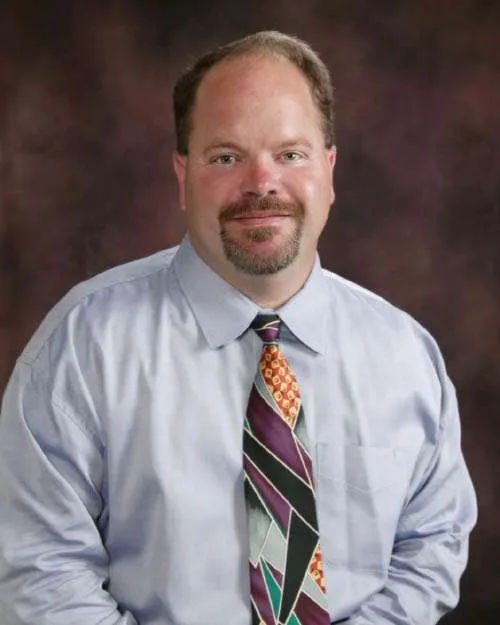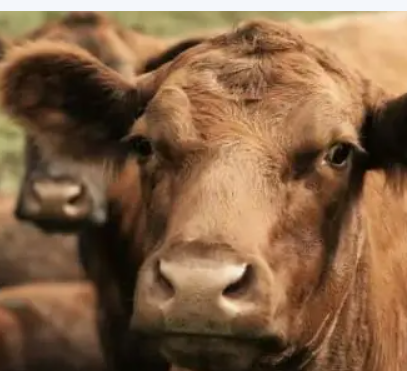From the Office of Public Affairs | https://www.news.ku.edu
Headlines
Experiment nixes ‘sterile’ neutrino explanation of previous unexpected measurements
LAWRENCE — Neutrinos, the second most abundant particles after light, are among the least understood particles because of how little they interact. Experimental particle physicists working at the Fermilab National Accelerator Laboratory, including a University of Kansas physicist, have found evidence against the existence of a “sterile” type of neutrino hypothesized to be responsible for previous experiments’ anomalous results.
Kansas Geological Survey assistant scientist receives early career award
LAWRENCE — Kansas Geological Survey assistant scientist Sam Zipper is the recipient of this year’s Hydrologic Sciences Early Career Award from the Hydrology Section of the American Geophysical Union. The award recognizes outstanding contributions to hydrology through research, education or societal impacts.
Full stories below.
————————————————————————
Contact: Brendan Lynch, KU News Service, 785-864-8855, [email protected]
Experiment nixes ‘sterile’ neutrino explanation of previous unexpected measurements
LAWRENCE — Experimental particle physicists working at the MicroBooNE experiment at Fermilab National Accelerator Laboratory have found evidence against the existence of a “sterile” type of neutrino hypothesized to be responsible for previous experiments’ anomalous results, as detailed in a paper recently published in Nature.
For one researcher at the University of Kansas, who was a co-author on the findings, the results hone the ongoing search to explain past anomalies in experimental data — for which a leading interpretation was that the three known neutrino types don’t represent the complete description of these plentiful particles (which are fundamental building blocks of reality, according to the Standard Model of particle physics).
“This experiment is part of a broad international effort to study neutrinos,” said co-author Maria Brigida Brunetti, assistant professor in the KU Department of Physics & Astronomy. “They are the second most abundant particle, after light. They travel through everything; they travel through us. Tens of trillions of them pass through your body each second, but you don’t notice them because they don’t interact much at all — they can only interact through the weak and gravitational forces.”
Because of how little they interact, neutrinos are among the least understood particles, which is why the international particle physics community is investing heavily in studying them.
“One of their peculiar features is that there are three types of them called flavors, and as they travel they transform between each other,” Brunetti said. “This phenomenon is called neutrino oscillation.”
MicroBooNE and other present and future experiments study these oscillations by capturing neutrinos after their journey and looking for differences from predictions.
“Because neutrinos only interact weakly, we need to produce a lot of them in intense beams in order for a few of them to interact in our liquid argon time projection chamber (LArTPC) detectors,” Brunetti said. “These detectors allow us to capture very high-resolution representations of particle interactions. In the detector, neutrinos interact with the liquid argon atoms and produce charged particles. As these particles travel through, they strip the argon atoms of electrons. We put an electric field in the detector, and all these electrons drift toward the readout elements where we collect the signal.”
These can be pixel sensors or, like in MicroBooNE’s case, multiple planes of wires, providing data that will paint scientists a fuller and more accurate understanding of the oscillation of neutrinos, as well as shedding light on other fundamental physics questions.
“From the information on which wires or pixels were hit by the drifted electrons and from the electrons’ arrival time, you can build 2D images or 3D representations,” Brunetti said. “These are high-resolution — we really can photograph the interaction in very high detail. We then develop sophisticated software, such as the Pandora event reconstruction that the KU group is expert at, that tells what it sees in the images. For example, where the neutrino interacted, what particles emerged from the interaction and produced the different signals, and their energies, which enables analysis of our large and complex datasets.”
According to the KU researcher, MicroBooNE was studying whether it’s possible that neutrinos also transform to a fourth sterile type, which could have explained the previous unexpected results.
“Sterile neutrinos would therefore only feel one of the fundamental forces, gravity. The experiment was looking for new physics,” Brunetti said. “But if this was the case, that there’s a fourth type of neutrino we don’t yet know of, this would’ve changed what we saw in our experiment. Instead, MicroBooNE didn’t confirm the anomalies that the previous MiniBooNE and LSND experiments observed, and it ruled out several possible explanations, including one in terms of oscillations to a sterile neutrino in this paper.”
Brunetti said the findings all but ruled out the existence of a sterile neutrino as an explanation for these anomalies. While the mysteries of the anomalous data remain, the KU scientist said the search has been narrowed by the findings, allowing for more informed future investigations.
Brunetti’s group at KU that is primarily involved in the ongoing Short-Baseline Neutrino (SBN) program at Fermilab and the future Deep Underground Neutrino Experiment (DUNE), reconstructs and interprets LArTPC data. This allows the researchers to determine the neutrino flavor and measure its energy to study the phenomenon of oscillation.
“For MicroBooNE, this is part of what we call the Short-Baseline Program at Fermilab,” Brunetti said. “You can either design experiments that look at a short-baseline oscillation, meaning the neutrinos don’t travel as much, or you can study experiments that let the neutrinos travel a longer distance, which is what DUNE will do. DUNE will also use a neutrino beam with a broad range of energies. The combination of the long baseline and the broad neutrino energy range will give DUNE unique capabilities to study oscillations. We have a complex of accelerators and ‘Near Detectors’ at Fermilab, and then we have what we call the ‘Far Detector,’ which will study the oscillated beam. Both Near and Far Detectors are crucial to achieving DUNE’s physics goals, such as determining which neutrino is the lightest and which the heaviest, studying whether neutrinos and antineutrinos behave in the same way, and looking for exciting new physics possibilities. The Far Detector is in South Dakota, so it’s an 800-mile journey.”
While MicroBooNE and DUNE both use LArTPC detectors, DUNE’s detectors will be much larger and more sophisticated. Along with another major effort in Japan, DUNE, which has more than 1,400 collaborators worldwide, represents the forefront of neutrino research, ensuring Brunetti and her students a role in further refining scientific understanding of the most basic workings of the universe.
-30-
————————————————————————
For every $1 invested in KU, taxpayers gain $2.90 in added tax revenue and public sector savings.
https://economicdevelopment.ku.edu/impact
————————————————————————
Contact: Sam Zipper, Kansas Geological Survey, 785-864-0364, [email protected]
Kansas Geological Survey assistant scientist receives early career award
LAWRENCE — Kansas Geological Survey assistant scientist Sam Zipper is the recipient of this year’s Hydrologic Sciences Early Career Award from the Hydrology Section of the American Geophysical Union. The award recognizes outstanding contributions to hydrology through research, education or societal impacts.
Zipper joins a distinguished group of scientists, leaders and communicators recognized by AGU for advancing science. Each honoree reflects AGU’s vision for a thriving, sustainable and equitable future supported by scientific discovery, innovation and action. Early career awards recognize scientists who are within 10 years of receiving their doctorates.
Steven Loheide, Zipper’s doctoral adviser and distinguished professor of water resources engineering at the University of Wisconsin-Madison, nominated Zipper for the award.
“Sam is a really unassuming scientist and amazing to watch work through a problem,” Loheide said. “He has a particular knack for making an observation or hearing something and storing away that piece of information. Then, he sees the puzzle where that piece should fit. One of the really fun things that I enjoyed when working with Sam was watching how he was able to, in the end, bring together all of the information he had at his disposal.”
Zipper leads the HydroEcology of the Anthropocene Lab (HEAL) at KGS. The goal of HEAL is to understand how local, regional and global change will affect the water resources of Kansas and the Great Plains region now and in the future. Zipper is also an assistant professor in the Department of Geology at the University of Kansas.
“In my work with Sam, I have been impressed by the breadth and depth of his knowledge, his energy level and his commitment to making contributions that have a strong societal relevance,” said Jim Butler, KGS senior scientist. “This is a well-deserved recognition of the quality of Sam’s work. It is also great recognition of the quality of the work that is done at the KGS and continues our tradition of national recognition of the strength of KGS hydrologists.”
Zipper was recognized Dec. 16 at AGU25 in New Orleans.
-30-
————————————————————————
KU News Service
1450 Jayhawk Blvd.
Lawrence KS 66045
[email protected]
https://www.news.ku.edu
Erinn Barcomb-Peterson, director of news and media relations, [email protected]
Today’s News is a free service from the Office of Public Affairs






